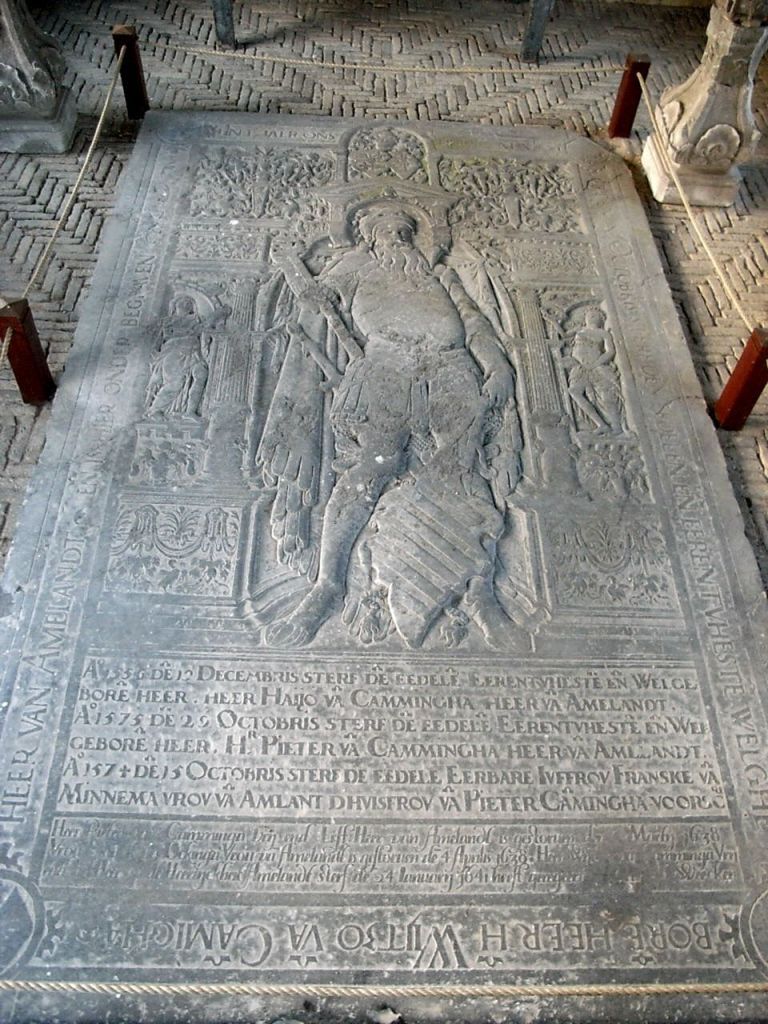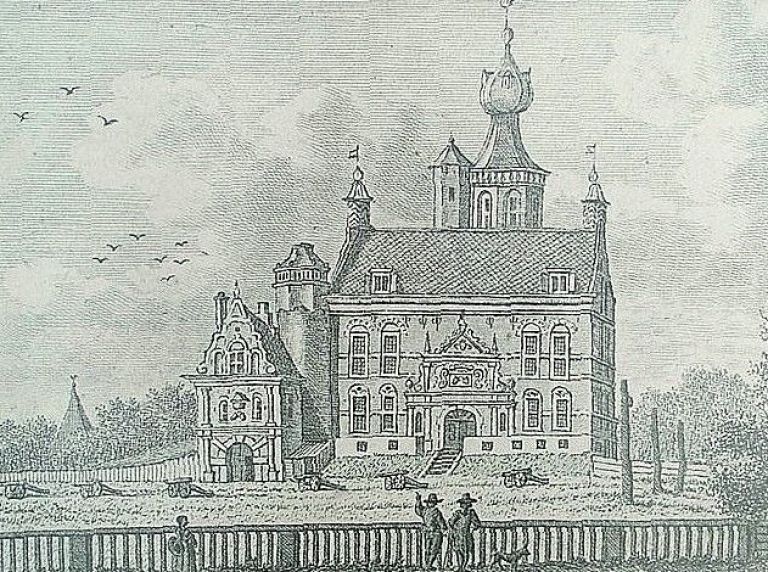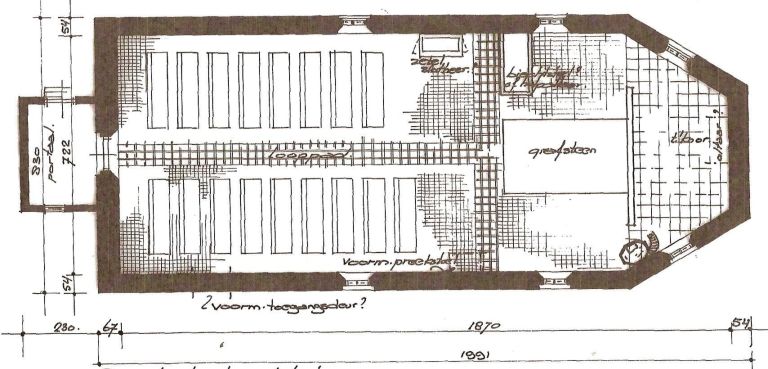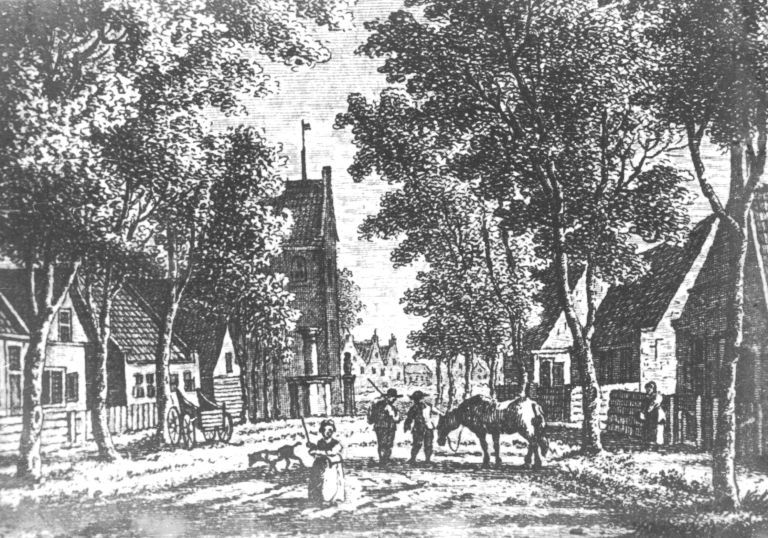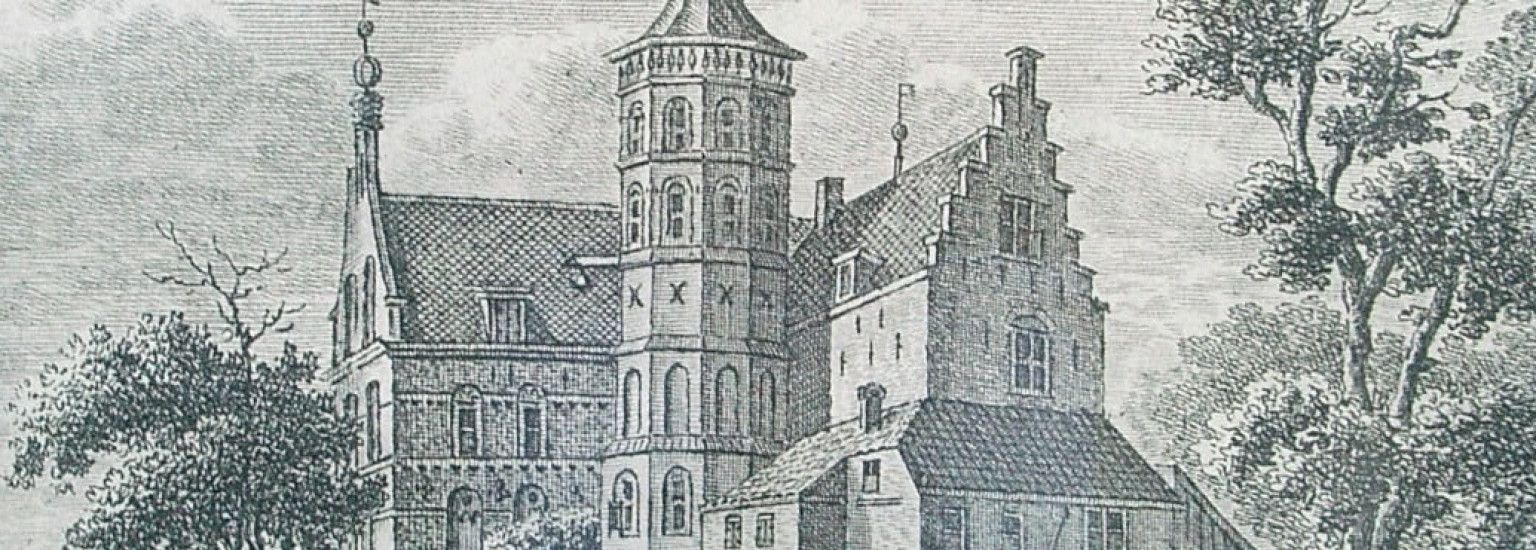
The previous Cammingha castle
Lords of Ameland
The first Lord of Ameland was Ritsche Jelmera, a Frisian nobleman, who, from 1424, represented the interests of the Ameland population, who were self-sufficient until that time. On the east side of Ballum he built an estate, and called it Jelmerastate, the Castle of Ballum.
The Van Cammingha castle
In its earliest form, the Castle was built around 1425 by the first Lord, or Chieftain, of Ameland, Ritsche Jelmera. In 1604, the westside of this essentially simple house was extended with a large transept and enhanced by Sicco van Cammingha, Lord of Ameland from 1583 until 1624. The building was built on heavy, arched basements meant to entertain the Lord and featured spacious rooms and a court room. With this extension, the large tower was also built, which incorporated a pine cone. Above the monumental main entrance, the crests of Sicco and his wife Catharina van Cammingha were applied, with the following text; ‘Nemo Sine Cruce’; Noone without a cross.
In 1704, Ameland was sold for 170.000 carolus guilders to hereditary governor of Friesland Johan Willem Friso, as a result of which the hereditary lordship was passed onto the house of Orange. On April 28th, 1828, the castle was sold for demolition to Jan Scheltema, merchant and contractor in Nes, for a total of 1250 guilders.
The current town hall is located roughly in the same location as the place where lords of the past would determine the affairs of Ameland.
What remained of this famous building?
In the archives drawings and descriptions can be found but on the location itself there is nothing to see. In the soil small remains may still be present, as were found before during construction of the town hall. This way a number of old fragments were found in April 1997, such as a brickwork pit, which could be the foundation of the old tower, and an ancient waterwell with interesting details.
The church
At the east side of the castle the cemetary of Ballum can be found, which was the site of a small church from early 14th century until 1838, within which the gravestone of the Van Cammingha family is located, which is still present in the little "baarhuis".
This church is most likely older than the castle of Ballum. The dimensions of the church measure 19,90 m. by 8,30 m. and it features a three-sided chevet. The walls with a thickness of 54 and 67 cm were built with special bricks (called "kloostermoppen"), and the foundation is still present at the cemetary and is marked with shells.
In 1640, the church was refurbished after which this was repeated in 1773. At that time, the monumental pulpit, originally from the big church of Harlingen, was placed. This pulpit was created in 1604 by Claes Jelles and can now be found in the Dutch reformed church of Ballum.
The floor of the church was covered with different tiles called "estrikken": non-glazed 20 by 20 cm flagstones of 4,6 cm thickness which were most likely used as a path through the church. Given the thickness of these flagstones, these will be the oldest tiles. There were glazed 13,5 x 13,5 flagstones with 2 cm thickness in the colours yellow/brown and green, these tiles were possibly used for the entire floor of the church, with the exception of the walking path. On the east side of the gravestone the chancel was covered with "estrikken" measuring 24 x 24 cm and a thickness of 3,5 cm in the colours yellow and green.
The gravestone
In the church one will find the gravestone of the "Heren (Lords)" of Ameland , this monumental gravestone was preserved and can be found in the "baarhuis" on the cemetary.
More information about the gravestone and the burial house 'het baarhuisje'
